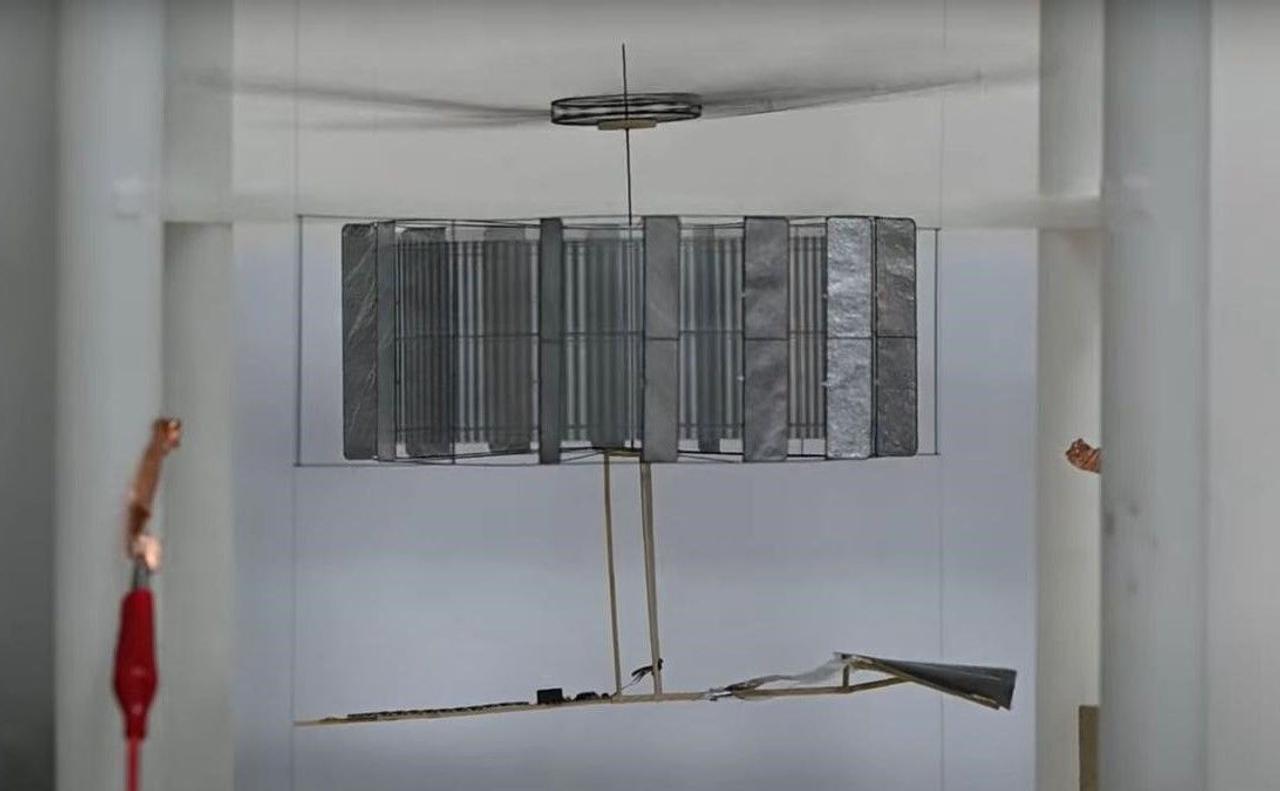
Chinese scientists create solar-powered drone that can fly all day
Researchers at Beihang University in Beijing have developed an ultralight solar-powered drone, capable of making unlimited flights during the day. The drone , called ColumbFly, weighs only 4 grams and uses solar cells to generate electricity. A solar cell is used to create an electric field between oppositely charged plates arranged in a circle. These charges act like magnets, repelling each other, which creates a force to rotate the rotor blades. This allows the drone to lift above the ground. ColumbFly has a high lift of 30,7 g per watt and a very lightweight power system that consumes only 0.568 watts. This allows it to fly continuously, using solar power in natural sunlight (920 watts per square meter). Every component of the drone was designed to balance efficiency and lightness, which allows it to be used for remote monitoring for a long time. The drone ‘s large motor has an inner ring of charged fixed plates (stator), made of thin aluminum-coated carbon fiber plates. The adjacent stator plates carry opposite charges and are surrounded by a ring of 64 rotating plates. Activation occurs when the outer ring plates are charged, initiating an attraction between opposing stator plates and driving rotation. Due to the close alignment of the stator and rotor plates contact through thin wires facilitates the transfer of charge, by converting attraction into repulsion. This mechanism keeps the rotor moving by ensuring that successive rotor plates hold opposite charges to the next stator plate. For the solar cells, the researchers used a thin film of gallium arsenide, achieving 30% efficiency. This required a high-voltage converter due to the low voltage. Despite sacrificing some efficiency for low weight, several converters were arranged in series. The system weighs 1.13 grams and increases the voltage from 4.5 to 9 kV with 24 percent efficiency. The ColumbFly drone is capable of flying untethered for 1 hour at an altitude of 15 centimeters, carrying up to 2 grams of small sensors or controls . While this may seem modest, the development team believes that improvements to the design will increase its durability and payload over time.

